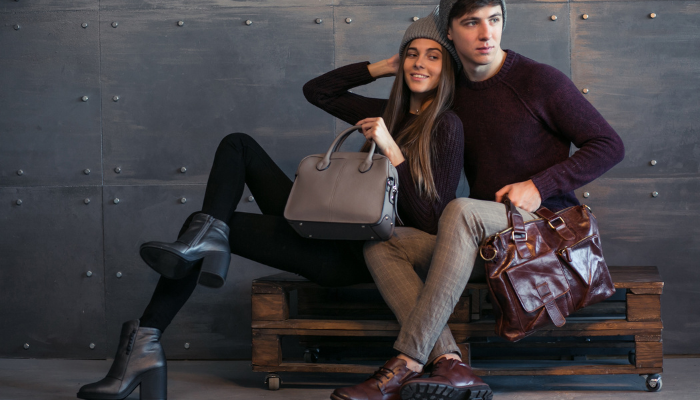
Acubi: The Minimalist Fashion Aesthetic Taking Over Gen Z Wardrobes
Acubi is not just another passing fashion trend—it’s a revolutionary aesthetic that fuses minimalism, futuristic edge, and soft femininity into one cohesive style. Originally surfacing in South Korea, the acubi fashion movement has rapidly taken over TikTok and Instagram, embraced by Gen Z for its unique blend of clean lines, muted palettes, and gender-fluid appeal.
What makes acubi so fascinating is its ability to express both simplicity and individuality. The aesthetic strikes a balance between structure and softness, combining cropped knits, asymmetrical tops, cargo skirts, sheer layers, and muted tones with edgy accessories. Whether you’re looking for a wardrobe overhaul or subtle outfit inspiration, acubi offers a fresh lens through which to view minimalist fashion.
The Origins of Acubi Fashion: Where It All Began
The term “acubi” is thought to be a stylized, shorthand derivation from Korean online slang or subculture vocabulary, though its exact etymology remains somewhat mysterious. What’s clear, however, is that the aesthetic found its footing in South Korea’s fashion-forward circles, particularly among style influencers and K-pop stylists experimenting with unconventional silhouettes and pared-down color schemes.
Influenced by post-Y2K minimalism, cyberpunk elements, and the normcore wave, acubi draws inspiration from the likes of early 2000s Prada, Helmut Lang, and even early Tumblr-era grunge. It’s a fashion aesthetic that reflects the cultural shift toward conscious dressing—where less is more, but the statement still matters. From Seoul’s streetwear scene to the digital runways of TikTok, acubi has grown organically into a style movement with global impact.
As the fashion world continues to embrace cultural cross-pollination, the rise of acubi underscores the influence of Korean youth culture and its global resonance. Much like how K-beauty reshaped skincare, acubi is redefining what it means to be fashion-forward in a hyper-digital, visual-first age.
Key Features and Elements of the Acubi Aesthetic
The acubi aesthetic is defined by its deliberate simplicity. Think muted tones—beige, slate gray, washed black, cream—paired with futuristic silhouettes and bold accessories. It’s not unusual to see a soft, ribbed tank top layered beneath a mesh cardigan, accompanied by utilitarian cargo pants and a mini shoulder bag. Each piece contributes to a clean yet compelling look.
Layering is a key stylistic feature. Rather than relying on bold prints or loud colors, acubi looks to focus on shape, structure, and material contrast. You’ll often see thin, sheer tops overlaid with slouchy knits or harness-style straps worn over basics. The juxtaposition between softness and structure is what gives acubi its modern, tech-forward vibe.
Shoes and accessories also play an essential role. Think platform sneakers, cyber-inspired sunglasses, and minimalist silver jewelry. These accents give the outfit an edge without overwhelming the overall aesthetic, maintaining the calm, minimalist core that defines acubi.
Acubi and the Rise of Gender-Fluid Fashion
One of the most compelling aspects of acubi fashion is its natural alignment with gender-fluid and androgynous dressing. The aesthetic isn’t bound by traditional gender norms; instead, it leans into silhouettes and styling choices that feel expressive yet neutral. Many of the garments featured in acubi wardrobes—oversized blazers, wide-leg trousers, fitted long-sleeves—are inherently unisex.
This makes acubi especially appealing to Gen Z, a generation deeply invested in self-expression and the deconstruction of binary fashion roles. Brands inspired by acubi often offer gender-neutral sizing and marketing, inviting everyone into the aesthetic rather than excluding them based on identity.
Beyond clothing, the movement also promotes a more inclusive vision of beauty. Soft makeup, undone hair, and natural tones complement the fashion, creating a complete aesthetic that speaks to authenticity and comfort. In this way, acubi offers not just a look, but a lifestyle.
How to Style an Acubi Outfit: Tips for Beginners

If you’re new to acubi style, start with the basics: choose a neutral palette—shades of white, taupe, gray, and black form the foundation of most acubi wardrobes. From there, select pieces that mix fitted and oversized elements—perhaps a form-fitting ribbed top with loose, parachute-style pants or a boxy, cropped jacket over a mesh tank.
Textures matter more than prints in this aesthetic. Mix soft knits with cotton, leather with chiffon, or denim with jersey to create a subtle visual contrast. Layering is essential—try overlapping tanks, shrugs, and mesh underlays to build dimension.
Accessories should be deliberate but not overwhelming. Consider a small nylon bag, silver earrings, or slim sunglasses to complete your look. Footwear often includes chunky sneakers, sleek boots, or strappy sandals, depending on the season. Above all, the goal is to create a cohesive ensemble that feels effortless but thoughtful.
The Future of Acubi: Trend or Timeless?
The question on everyone’s mind is whether acubi is just a trend or a long-lasting shift in fashion. While it emerged in the post-Y2K nostalgia wave, its minimalism and adaptability suggest staying power. Unlike fleeting microtrends, acubi prioritizes versatility, comfort, and emotional expression—values that align well with the current fashion climate.
Major retailers and indie designers alike are now incorporating acubi-inspired pieces into their collections, suggesting that the aesthetic is maturing into a full-fledged genre. From capsule wardrobes to editorial fashion shoots, its influence is expanding beyond niche circles.
In many ways, acubi could be seen as the new minimalist uniform—a response to maximalist exhaustion and fast fashion fatigue. With sustainability in mind, its emphasis on fewer, better pieces resonates with consumers seeking both style and purpose. All signs suggest that acubi is more than a moment; it’s a movement.
Conclusion: Acubi as the New Minimalist Standard
Acubi is not just a trend; it’s a modern fashion philosophy. Rooted in minimalism but reimagined for a tech-savvy, expressive generation, it captures the spirit of contemporary youth culture. By focusing on neutral tones, soft silhouettes, and functional layering, acubi redefines what it means to dress stylishly yet authentically.
Whether you’re embracing acubi for its aesthetics or its deeper message of individuality and inclusivity, one thing is clear: this is a style here to stay. As the fashion world continues to evolve, acubi will likely remain a defining voice in the chorus of modern minimalism.
Frequently Asked Questions (FAQs)
1. What does “acubi” mean in fashion?
Acubi is a minimalist, gender-fluid fashion aesthetic originating from South Korea, characterized by neutral tones, layered outfits, and soft, futuristic styling.
2. Where did acubi fashion originate?
Acubi fashion originated in South Korea, particularly in online fashion communities and among youth subcultures.
3. What are the key colors in the acubi aesthetic?
Common acubi colors include white, black, gray, beige, taupe, and muted pastels.
4. Can men wear acubi style?
Absolutely. Acubi fashion is inherently gender-fluid and welcomes all expressions, regardless of gender.
5. How is acubi different from other minimalist styles?
Acubi incorporates futuristic and cyberpunk elements, often blending structure with softness, unlike more traditional minimalist fashion which is often rigid or stark.
6. What fabrics are popular in acubi fashion?
Soft knits, mesh, cotton, denim, and sometimes faux leather are commonly used to create depth through layering.
7. Is acubi considered a sustainable fashion choice?
Yes, due to its emphasis on quality over quantity and neutral, versatile pieces, acubi aligns well with sustainable fashion values.
8. How do I start building an acubi wardrobe?
Begin with neutral basics, add layers like shrugs or mesh tops, and invest in structured bottoms like cargo pants or maxi skirts.
9. What accessories complement acubi outfits?
Minimalist silver jewelry, sleek sunglasses, small crossbody or shoulder bags, and monochrome shoes work best.
10. Are there any influencers or celebrities known for acubi style?
Many Korean influencers on Instagram and TikTok, as well as K-pop idols like NewJeans and LE SSERAFIM, often incorporate acubi elements into their looks.







